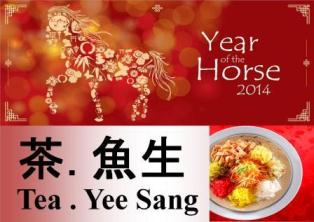
February 14, 2014, by Deepa Kumari Veerasingam
Graduate School Tea & Yee Sang Session
In celebration of the Chinese lunar calendar’s most important festival, the Graduate School had organised a Tea & Yee Sang session on 14 February 2014. The session started with a short presentation about Yee Sang, also known as Spring Toss.
The Chinese New Year is a time for many things: family, reunion dinner, mandarin orange (also known as tangerine), McDonald’s annual, non-permanent Prosperity Burger, and of course, Yee Sang.
Whether you pronounce it “Yee Sang”, “Yu Sheng” or call it by its Cantonese name “Lo Hei”, for most celebrants of the Chinese New Year, the festivities simply aren’t complete without partaking in the tossing of this fantastic fish salad and wishing upon yourself and each other a prosperous year ahead.
Yee Sang literally means “raw fish”, but its pronunciation in Chinese carries a totally different meaning – “increase in abundance”. Thus, Yee Sang became a tradition synonymous with abundance, prosperity and vigour.
Just as food debates about the origins of Hainanese chicken rice, satay and chili crab, there are many stories about the origins of Yee Sang. But who really lays claims to this delicious crispy and refreshingly sweet dish?
Yee Sang traces its roots back to ancient China, or more specifically, the coastal cities of Chaozhou and Shantou, located in the province of Guangdong. The people there, mostly Teochew and Cantonese, celebrated the seventh day of the Chinese New Year or “everyone’s birthday” by consuming raw met as it was believed that the Chinese goddess Nuwa created man on the seventh day. The raw meat by later replaced by raw fish, most likely because of the sheer abundance of seafood where they lived.
Throughout the mid-19th and early 20th centuries, China experienced what was known as the Age of Turmoil. There was much strife in the country, owing largely to British intervention in Chinese matters. People from China started migrating in large numbers to Southeast Asia and began settling in Thailand (then known as Siam), Penang, Johor and Singapore.
After World War 2, many Chinese families started celebrating the seventh day of the Chinese New Year by enjoying slices of raw fish, just as they did back in China. This time around, they improvised the dish and added vegetable, mainly turnips and carrots, as to not waste the leftovers from the last six days of celebration. To add the flavour of the dish, they used oil, vinegar and sugar, and for added texture, they began mixing in crispy crackers, which isn’t far from the version we all enjoy today.
There’s hardly a Malaysian who has not joined their Chinese friends in enjoying Yee Sang during the Chinese New Year to usher in a year of great success. Because of its “halal” nature, anyone can join in the merriment of stirring and tossing Yee Sang while wishing for a year filled with auspiciousness.
For everyone that had attended the session, thank you and we look forward to your participation for future events.
Cheers!

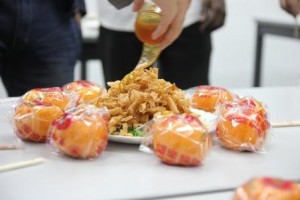
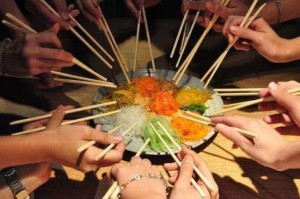
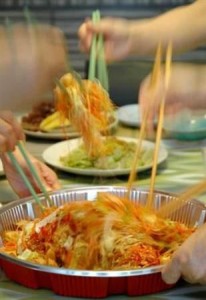
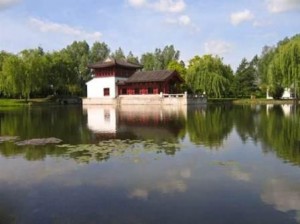
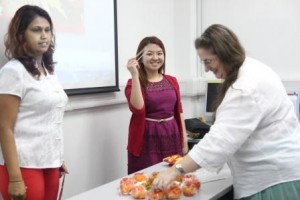
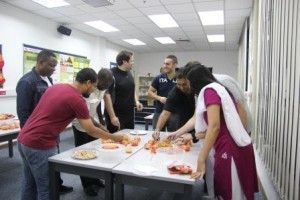
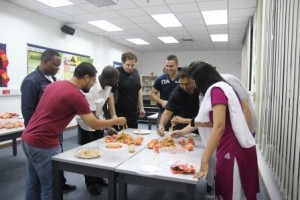
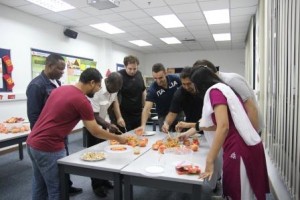
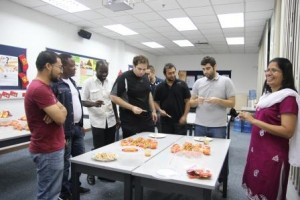
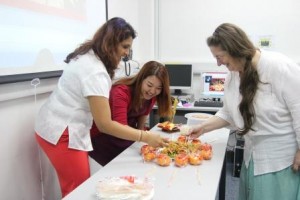
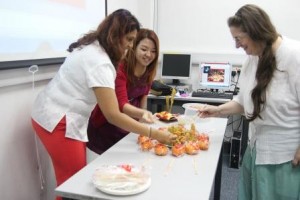
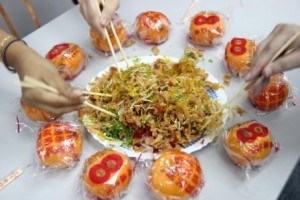
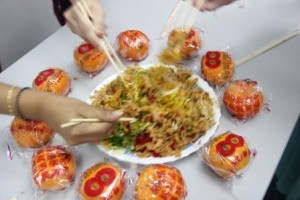
[…] In celebration of the Chinese New Year, a very first Tea and Yee Sang session was held on 14 February 2014. Approximately 20 staff and postgraduate students joined in the merriment of stirring and tossing Yee Sang while wishing for a year filled with auspiciousness. To view more on this, click Graduate School Tea . Yee Sang Session. […]